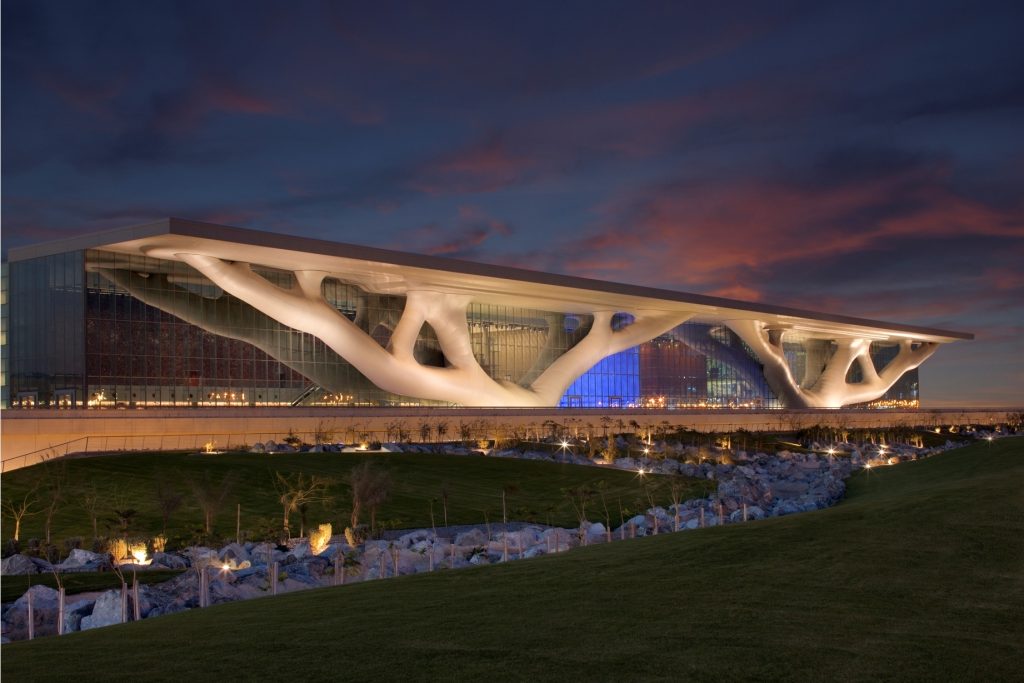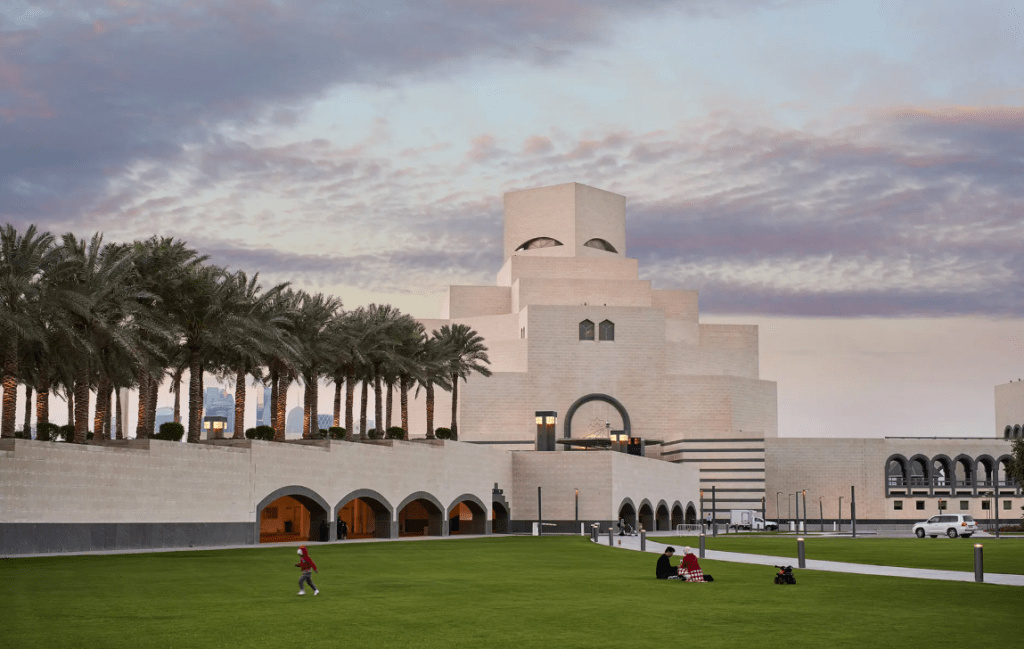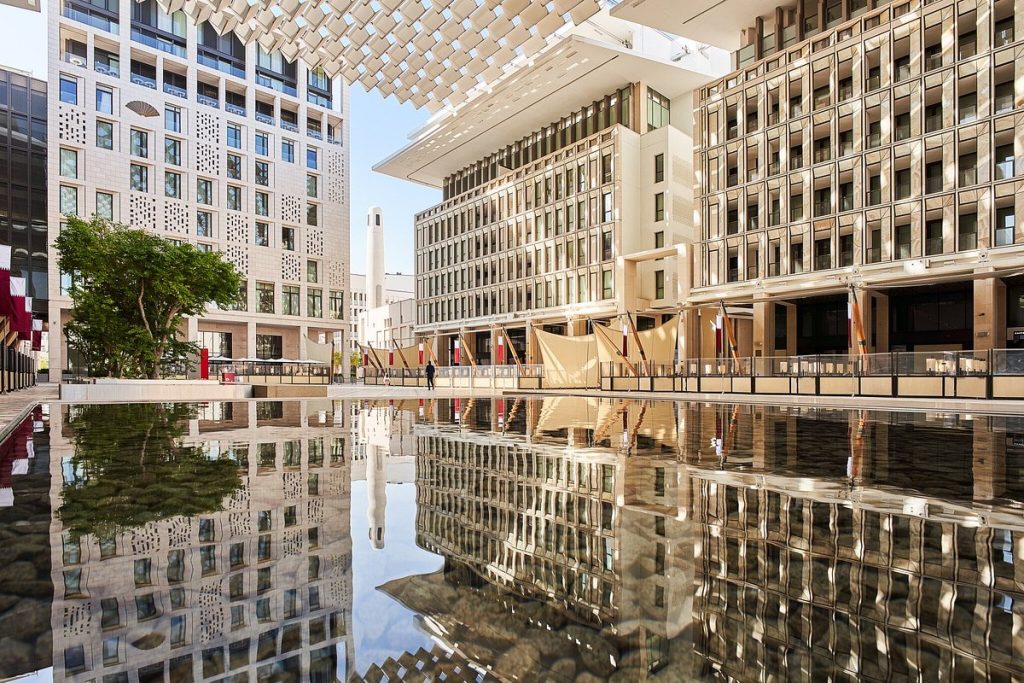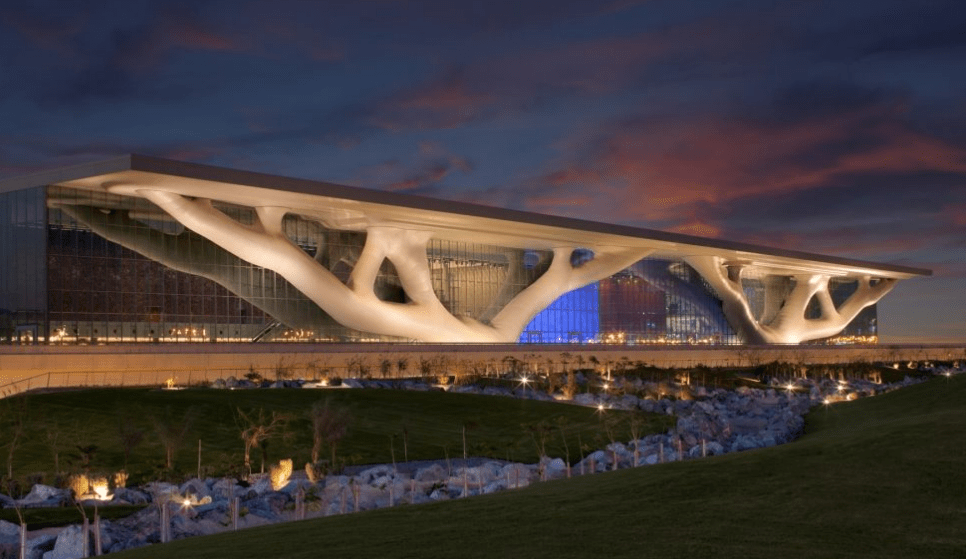Qatar stands as one of the beacons of architectural innovations in the region, where tradition and modernity coalesce to form some of the world’s most stunning structures.
Today, Qatar’s skyline is a reflection of its rapid development and architectural ingenuity. This article delves into a few of Qatar’s architectural landscapes, each illustrating the nation’s commitment to preserving its rich cultural roots while pioneering forward-thinking design.
National Museum of Qatar


The National Museum of Qatar (NMoQ), designed by Jean Nouvel, exemplifies a sophisticated fusion of nature, heritage, and innovative design.
Opened in 2019, the building’s form is inspired by the desert rose, a naturally occurring crystal formation found in the Qatari desert, which serves as both an aesthetic and conceptual reference.
The integration of the historic Sheikh Abdullah bin Jassim Al Thani Palace within the design creates a potent dialogue between the old and the new, anchoring the museum in both Qatari history and its forward-looking aspirations.
Qatar National Convention Center


The Qatar National Convention Center (QNCC), designed by Japanese architect Arata Isozaki, is an exemplary synthesis of cultural symbolism and cutting-edge architectural engineering.
The façade, which evokes the form of two Sidra trees intertwined, alludes to the Sidra tree’s cultural significance as a symbol of learning, endurance, and resilience in the desert.
The QNCC was awarded LEED Gold certification for its sustainable design.
The Museum of Islamic Art


Designed by the renowned architect I.M. Pei, the Museum of Islamic Art (MIA) is an exemplar of modernist architecture rooted in the principles of classical Islamic design.
Opened in 2008, the museum is marked by its austere geometric façade, which draws on the rich tradition of Islamic geometric abstraction and is emblematic of Pei’s mastery of spatial organization and light manipulation.
Msheireb Downtown Doha


Msheireb Downtown Doha is a transformative urban project that reinterprets traditional Qatari architectural elements within the framework of sustainable, 21st-century urbanism.
This ambitious development, situated in the heart of Doha, integrates passive design strategies—such as courtyards, shaded walkways, and wind towers—with modern building technologies, creating a sophisticated, energy-efficient urban environment.
Katara Mosque


The Katara Mosque, also known as the Blue Mosque of Katara, is a striking architectural gem located within the Katara Cultural Village in Doha, Qatar.
Designed by the acclaimed Turkish architect Zeynep Fadıllıoğlu, the mosque is celebrated for its masterful integration of Turkish, Persian, and Islamic design traditions.
The structure features a prominent central dome surrounded by nine smaller domes arranged in the pattern of an Islamic star. The minaret, an important architectural feature, is notably detached from the main building, adding a unique visual dimension to the mosque’s design.
Qatar’s architectural achievements epitomize the intersection of tradition, modernity, and sustainability, with each structure reflecting the country’s cultural evolution and its growing influence on the global stage.
WE ALSO SAID: Don’t Miss… From Historic Forts To 19th Century Mansions: A Regional Look At Palestinian Architecture



